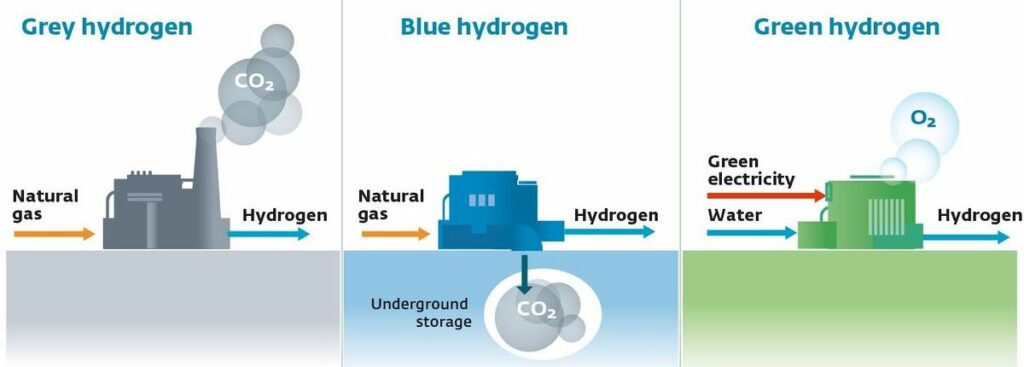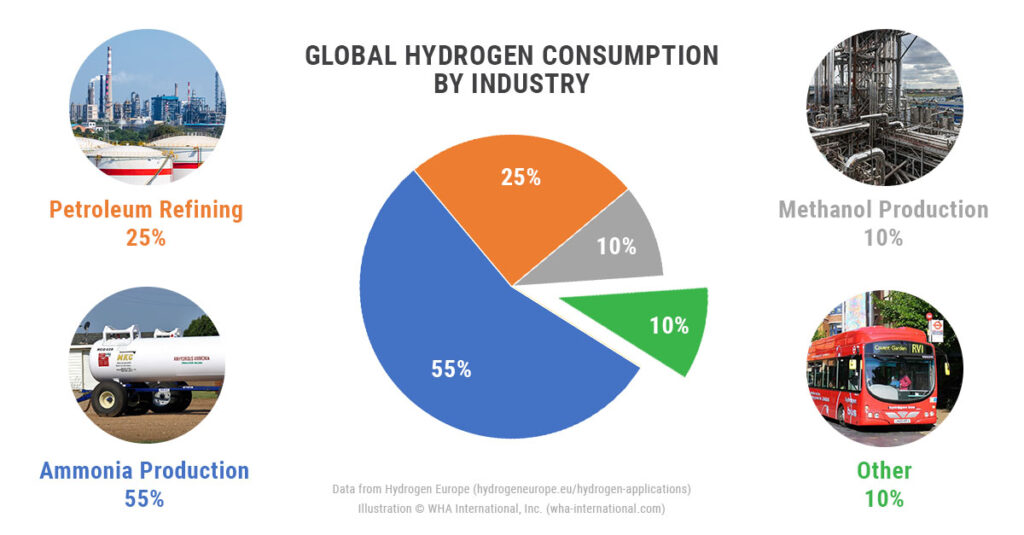Hydrogen Uses in Everyday Life
Photo by Petrmalinak via ShutterStock
04 April 2024 – by Eric Koons Comments (0)
What is Hydrogen Used for?
Hydrogen has many uses and can provide an alternative renewable energy option to fossil fuels. However, many technologies available to produce hydrogen gas are not renewable. As a result, most hydrogen produced today is from non-renewable sources.
Even without considering how hydrogen is produced, adoption remains relatively low, and costs remain high. The high price tag is one of the main barriers to adoption. Yet, as innovation drives down costs, hydrogen use may jump into new industries and see a spike in usage rates.
Different Types of Hydrogen
Although hydrogen is the smallest atom (with a single proton and a single electron), the energy market recognises several types of hydrogen. The most common type of hydrogen is grey hydrogen, which is produced from natural gas. The second most common type is blue hydrogen, which is produced from methane. The third most common type is green hydrogen, which is produced from water. The type of hydrogen does not come from its molecular structure but relates to the energy source used in production. Here are the three most common types of hydrogen:

Green Hydrogen
Green hydrogen production is with electrolysis powered by renewable energy. Typically, its renewable energy comes from large wind or solar farms and produces hydrogen with next-to-zero carbon emissions.
Grey Hydrogen
On the other hand, grey hydrogen comes from electrolysis or stream methane reforming (SMR) powered by non-renewable energy. Grey hydrogen is typically associated with high carbon emissions because the greenhouse gases produced during production are released directly into the environment. Grey hydrogen makes up the vast majority of the hydrogen produced today.
Blue Hydrogen
Blue hydrogen falls between grey and green. The energy used to power SMR comes from natural gas, a fossil fuel like grey hydrogen, but it is paired with carbon capture and storage (CCS) to reduce the overall emissions.
However, the debate is ongoing regarding the viability of blue carbon and CCS as a whole. A recent study found that blue hydrogen only produced 12% fewer carbon emissions than grey hydrogen and 20% more emissions than directly burning natural gas for energy.
What Are the Main Uses of Hydrogen Today?
The use cases for hydrogen will likely expand in the coming decades as the world shifts to a low-carbon future. While hydrogen suffers the same issues as natural gas (infrastructure leaks, energy-intensive stabilisation for transportation, and high flammability), it has a stronger potential to drive economies because:
- Hydrogen is energy-dense – with 120 MJ per kilogram, compared to natural gas (55 MJ/kg), coal (24 MJ/kg), and oil (44 MJ/kg).
- It can be a carbon-neutral fuel.
- It is diverse and effective for domestic, commercial and industrial uses.
Today, the primary uses of hydrogen are in petroleum refining and ammonia production for fertilisers. Additionally, research shows that the transportation and utility industries are two main markets that will see hydrogen energy adoption increase in the next several decades.

10 Uses of Hydrogen
While the hydrogen market is dominated by oil refining and fertiliser production, there are still many other uses for hydrogen. We expect that over time the number of efficient use cases for hydrogen will increase as innovation within the industry drives down costs.
Hydrogen fuel cell technology is one use case that has a growing backing and follows this trend. These fuel cells generate electricity by combining hydrogen atoms and oxygen atoms. Hydrogen fuel cells can power vehicles as an alternative to internal combustion engines. Unfortunately, the lack of fuel station infrastructure and high costs still make implementation for passenger vehicles challenging. However, several car companies and countries are setting targets for hydrogen vehicle development and production.
Beyond fuel cells, the uses for hydrogen are surprisingly versatile. These include:
- Entertainment and air transportation – as a lifting agent
- Food industry – for acid and base production
- Processing of plastics
- Processing of paints and varnishes
- Welding – especially of steel, with oxyhydrogen welding
- Metal extraction from ore
- Medical use – for hydrogen peroxide production
- Glass production
- Hydrogen Fuel Cells for cars
- Liquid hydrogen as Rocket fuel

The Green Hydrogen Future
Hydrogen uses are numerous and offer a powerful new tool for combating climate change. However, its relatively high price and lack of infrastructure limit hydrogen use and curb its expansion. Still, carbon taxation, public pressure to make low-carbon grids and economies, and pessimistic overtones from international energy agencies are likely to cast a new light on hydrogen as an energy source.
by Eric Koons
Eric is a passionate environmental advocate that believes renewable energy is a key piece in meeting the world’s growing energy demands. He received an environmental science degree from the University of California and has worked to promote environmentally and socially sustainable practices since. Eric’s expertise extends across the environmental field, yet he maintains a strong focus on renewable energy. His work has been featured by leading environmental organizations, such as World Resources Institute and Hitachi ABB Power Grids.
Read more







